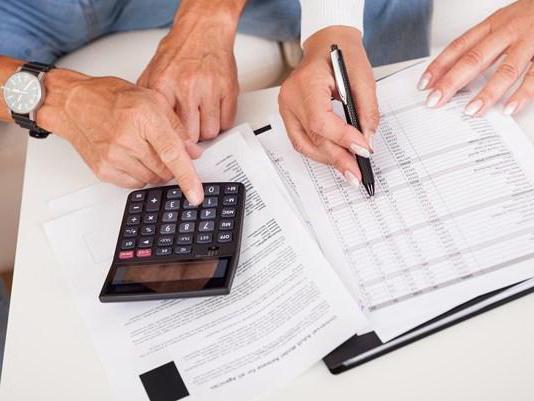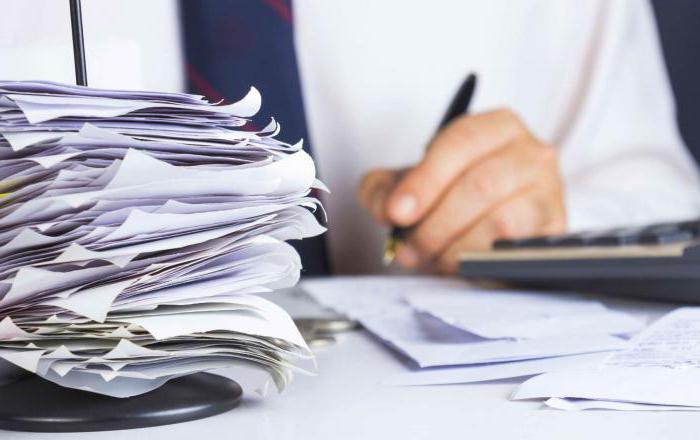Such concepts as input and output VAT are not contained in the Tax Code or other legal act. Nevertheless, most accountants and any tax specialist are well acquainted with them - these expressions refer to professional slang.
Outgoing VAT is also called a weekend - it is a tax that a company issues to its customers on invoices and must pay to the budget. But before, its amount can be reduced by the amount of VAT included. This is the name of the tax that the company pays its suppliers as part of the price of the purchased product or service.

Where to look for input tax
Buying something for its activities from the seller, who himself is a VAT payer, the company receives an invoice. It should indicate the value of the goods (services), as well as a separate line - “including VAT”. This tax is either input (input) or presented. And it is called so because it is presented by the seller when purchasing the goods, that is, at its “entrance” into the company.
Why allocate input VAT? The fact is that if certain conditions are met, the taxpayer has the right to deduct it. To understand the nature of the deduction, you need to consider how the movement of goods from the manufacturer to the final buyer occurs.

In the simplest case, there are only two parties to the transaction - the manufacturer and the buyer. The manufacturer sets the price of the goods, calculates and adds tax to it. Having received payment, the manufacturer pays tax to the budget, the rest of the amount goes to him in income. Thus, despite the fact that the producer is the tax payer, it is actually paid at the buyer's expense.
What is a VAT chain
But most often between the manufacturer and the buyer are intermediaries. For example, the path to the consumer looks like this: Manufacturer - Wholesale supplier - Store - Buyer. Each of the participants in this chain, except the end consumer, sells the goods to the next one at a certain price, which includes VAT. At the same time, two intermediate links are entitled to deduct the input tax.
Let us illustrate with an example. The wholesaler purchased goods worth 1,000 rubles apiece from the Manufacturer, including VAT of 152 rubles. This is the input tax for the Wholesaler. Its tax margin amounted to 500 rubles. Thus, goods will be delivered to the Store at a price of 1,500 rubles, including 228 rubles VAT. This is the outgoing tax of the Wholesaler. Thanks to the deduction mechanism, the Wholesaler can reduce the tax payable to the budget by the amount of input VAT. The tax calculation in this case will be as follows: 228 - 152 = 76 rubles from each unit of goods. That is, the Wholesaler from his own funds pays only the tax from his margin. And the rest of it passes to the next link - the Store.
The store purchases goods at a price of 1,500 rubles per unit, including VAT of 228 rubles. Let the store’s margin including tax also be 500 rubles. As a result, the Buyer purchases the goods at a price of 2000 rubles, including VAT of 305 rubles. The store applies a deduction and reduces its tax payable. Its amount will be 305 - 228 = 77 rubles. It turns out that the Store also pays tax only at its own margin. And its main amount is included in the retail price and transferred to the shoulders of the Buyer.
As you can see, the tax is transferred along the chain from one link to another. And this is not a metaphor - the term “VAT chain” is quite official and is used by tax authorities.

Deduction Terms
To deduct input VAT and reduce your tax liability, several conditions must be met:
- Goods (services) purchased by the company should be used for activities taxed by this tax.In other words, only payers of this tax are entitled to the deduction of input tax. What to do with everything else depends on the tax system adopted by the company and its accounting policy. For example, the input VAT for the simplified tax system with the object “income minus expenses” may be included in the structure of expenses taken into account when calculating the tax base.
- The buyer must have a correctly drawn up invoice issued by the seller.
- At the time the deduction is applied, the goods and services for which it is claimed must be taken into account by the organization.
About the importance of invoices
The main document for the deduction of input VAT are invoices. Their correct preparation should be taken very seriously, since since 2015 the data of these documents have been included in the declaration.
During a desk audit, the information that the buyer of the goods indicated in his declaration will be compared with the information of the seller. If any inconsistencies are revealed, the parties to the transaction will receive requirements to clarify the situation. In the event of adverse events, deductions from the company may be withdrawn, which means that the tax will have to be paid extra. In addition, the Inspectorate of the Federal Tax Service will impose a fine and calculate penalties for late payment of tax.

In what period can VAT be deducted
The deduction of VAT presented by suppliers can be made in the period when all the above conditions are fulfilled. However, doing this right away is not necessary - the law allows you to deduct a tax for three years. This opportunity is convenient to use, for example, in the case when the supplier delays in issuing an invoice.
In addition, a deduction deduction mechanism is often used to prevent budget reimbursement. This happens when the amount of incoming VAT exceeds the size of the outgoing. Compensation is associated with a tax audit, and not every company will voluntarily do this. So, to avoid this, it is possible to deduct in the current quarter not all of the input VAT, but only part of it. The rest of the tax can be deductible later - in any period for three years.
Separate input tax accounting
Quite often, a company carries out non-taxable operations along with activities that are subject to VAT. In this case, for example, the same material can be used. And it is not always known in advance how much it will be spent on taxable activity, and how much - on tax-free activity. In this case, for the possibility of applying a tax deduction, the company must keep separate records of input VAT. Details of his organization are recorded in accounting policies.
In accounting, the VAT presented is taken into account on account 19. When carrying out taxable and non-taxable operations, several sub-accounts are opened for it to account for the input tax on goods and services, which:
apply in taxable transactions;
participate only in non-taxable operations;
are used in both activities.

Input VAT for taxable transactions can be deductible. And that part of the tax that corresponds to non-taxable transactions can be attributed to income tax expenses. But what about the third part, which applies to both those and other operations?
If a company keeps separate VAT records, it will be able to claim a portion of such tax for deduction. To determine which one, it is necessary to calculate the share of revenue received in the period from taxable activities in the total revenue from sales. For deduction, it will be possible to take a similar share of the input tax on goods and services that are acquired for taxable and non-taxable VAT operations.
So, input VAT is the key concept for applying deductions for this tax. And they, in turn, are a legal mechanism for legally reducing the tax burden. However, only if all the conditions established by law are met.